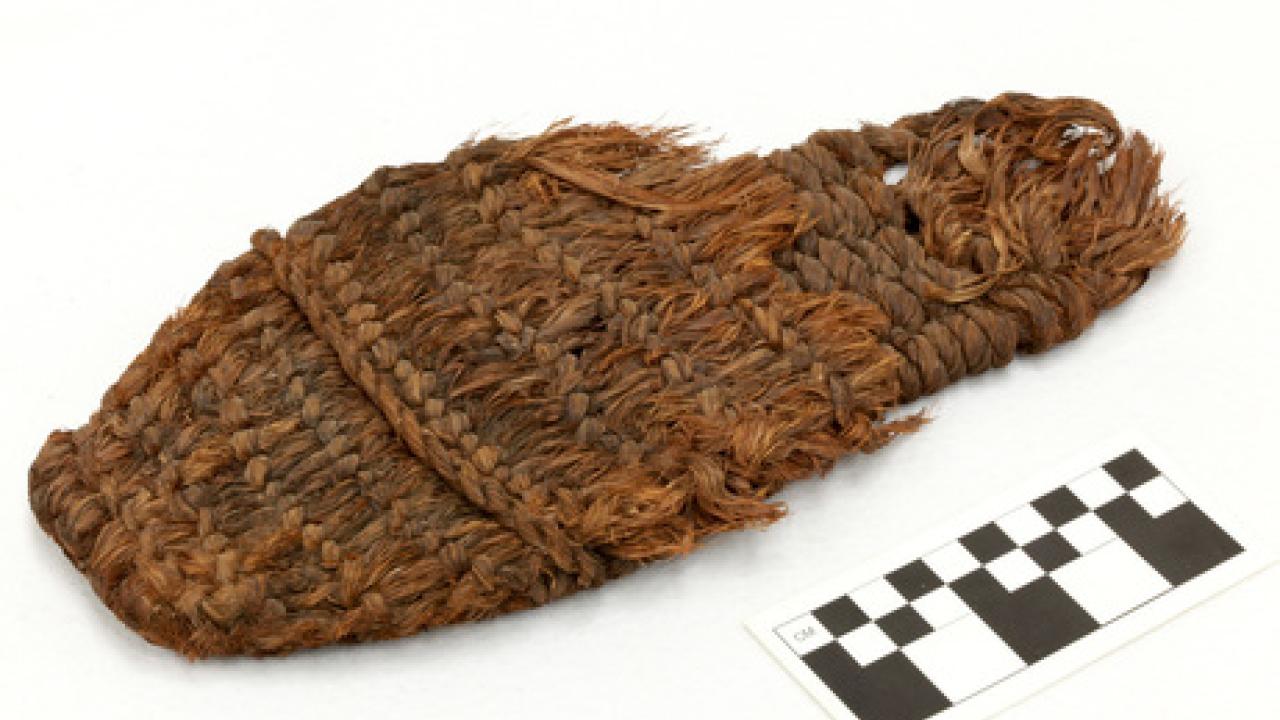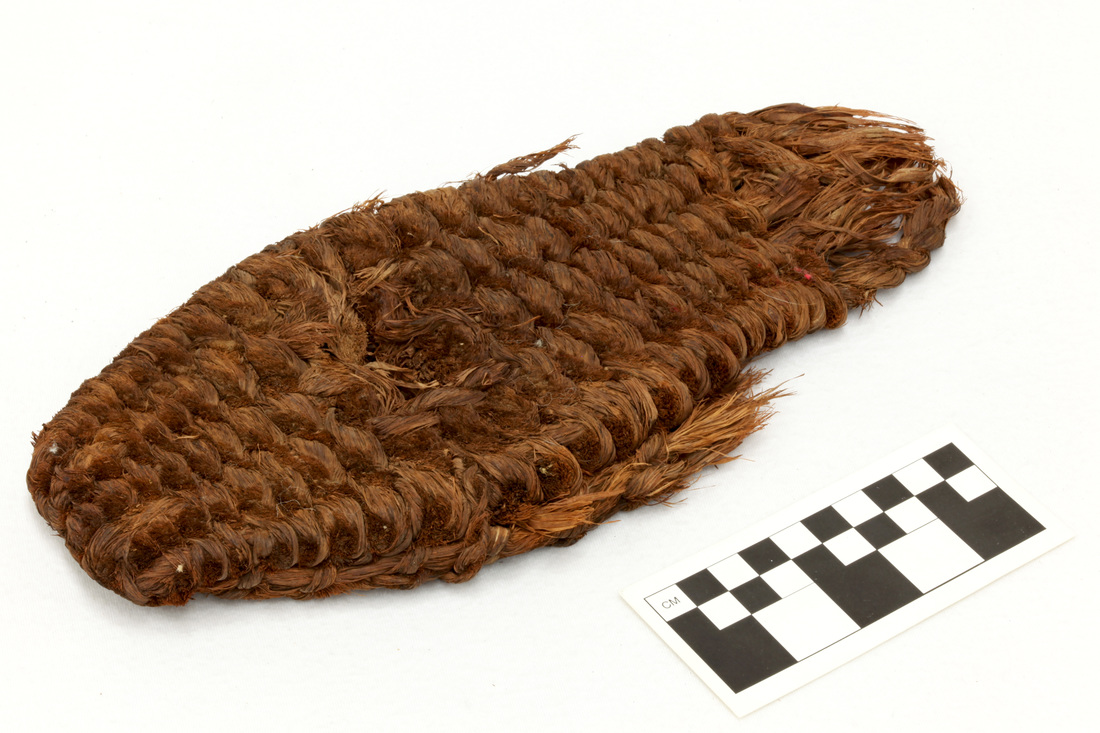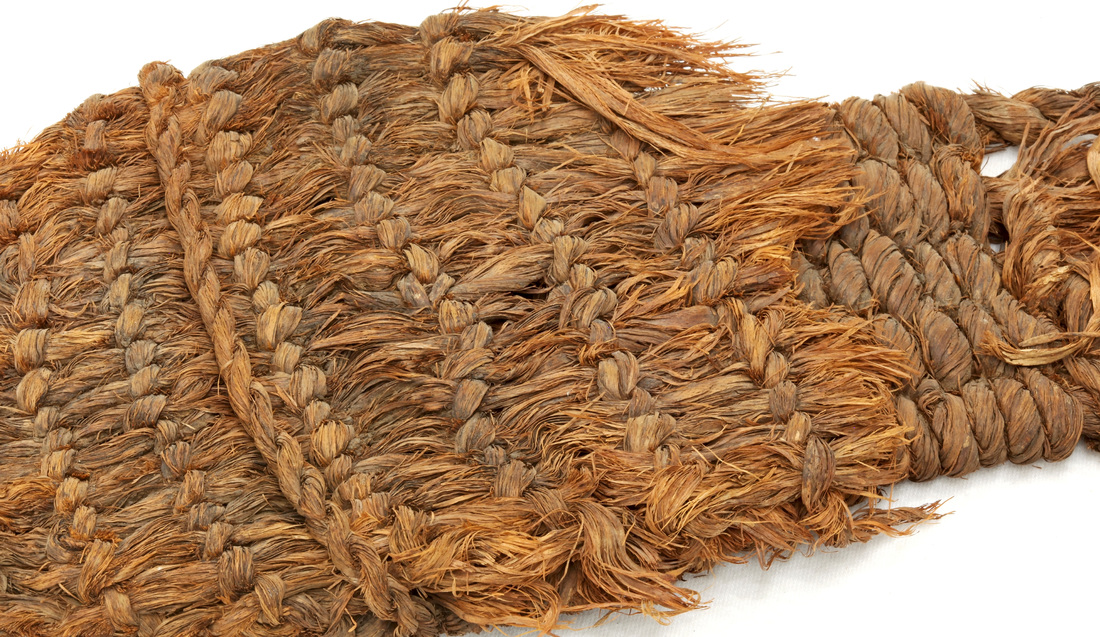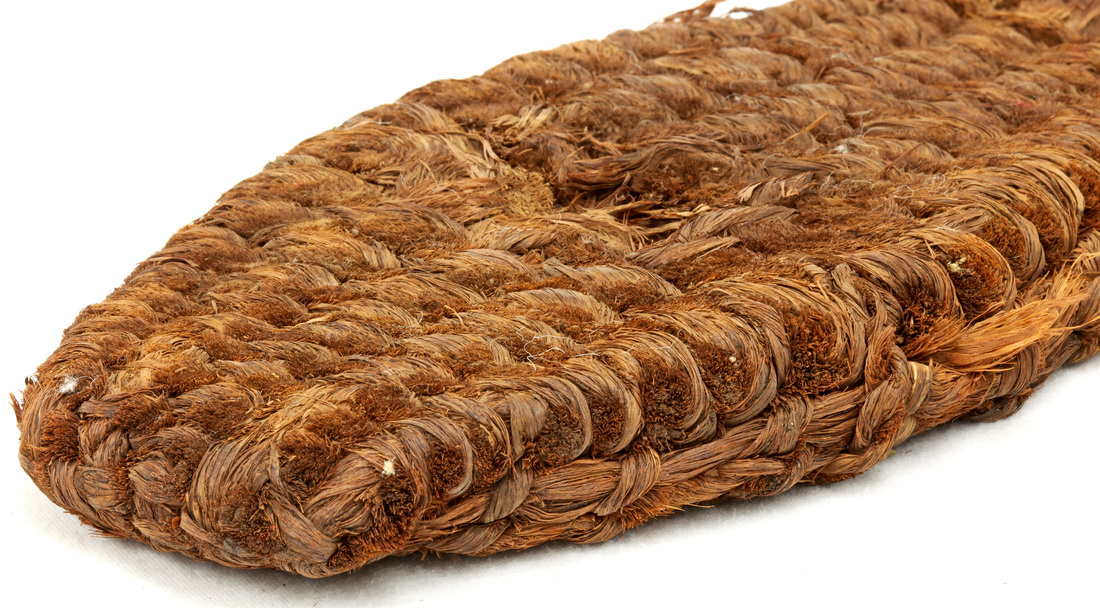
December 12, 2015: Fort Rock Sandal
Artifact of the Week: Fort Rock Sandal
In 1938, on a volcanic butte in the most northwestern edge of the vast Great Basin, archaeologist Luther Cressman made a discovery in the Fort Rock Cave, near the Fort Rock Crater in Central Oregon. A cache filled with dozens of woven sandals lay beneath a layer of volcanic ash, determined to have been left by the Mount Mazama volcano that erupted about 7,500 years ago. This was big news, as it established a minimum date that the rare textiles could have been left. We now knew that people had made this type of textile at least 7,500 years ago, but as to how long they were left before the volcanic eruption, we could only speculate. Volcanic ash layers are a good way to establish relative dating when other corroborating evidence can be used to determine how long ago the blast was, but at the time, no absolute dating method for something of this age existed.
Radiometric dating had been developed by at least 1907, when Bertram Boltwood published on a possible method to date rocks based on uranium’s decay into lead. However, the idea of an organic dating method was seen as unlikely due to the lack known radioactive elements in organic matter. In 1934, the possibility of a radioactive carbon was theorized by Franz Kurie, Yale Physicist, but its measurement proved elusive.
Two years later, however, physicist Martin Kamen and Sam Ruben, from UC Berkeley, discovered a radioactive isotope of carbon, carbon-14, and determined the half-life of its beta decay into nitrogen-14 to be about 5,700 years. Following this discovery, it was further learned that carbon-14 existed in trace amounts in the atmosphere and was the natural product of cosmic radiation turning stable nitrogen to carbon-14 the upper atmosphere.
By 1947, Berkeley chemist and contributor to the Manhattan Project Williard Libby had developed a theoretical application to use naturally occurring carbon-14 to provide a method of absolute dating of organic material. The underlying principle Libby understood was that organic material, regardless of tropic level, incorporates carbon-14 into its tissue proportionate to the atmospheric ratio, since the pool of all organic carbon ultimately comes from photosynthetic carbon fixation. When that organic creature died, however, it would no longer incorporate new carbon-14 from the atmosphere, and the carbon-14 already in its tissues would decay at a fixed, known rate. It would therefore be possible to look at the ratio of carbon-14 to stable carbon in an old, organic substance, and be able to known how long ago that substance ceased being a living organism.
This discovery would have huge implications for the field of archeology. To test his theory, though, Libby would have to compare material of known age to see if the experimental data would tell the same story. Libby and his colleges sent out a call around the world for other researchers to send them organic specimens. Soon, a wealth of material began showing up at Libby’s lab – Egyptian mummy hair, lines of Peruvian rope, textiles wrappings of the Dead Sea Scrolls, mammoth bones, wood from glacial moraines, and, among them, this sandal.
The results of Libby’s radiocarbon dating showed this sandal to be 9188±48 years old, or calibrated, 10,920-9,650 BP. While the sandal is used and worn-out in some places, it’s looking pretty good for the 10,000 years it has seen. This artifact has the lucky distinction of being both an excellent example of ancient material-culture as well as part of the fascinating story of learning how to date the dead through its dying carbon.


